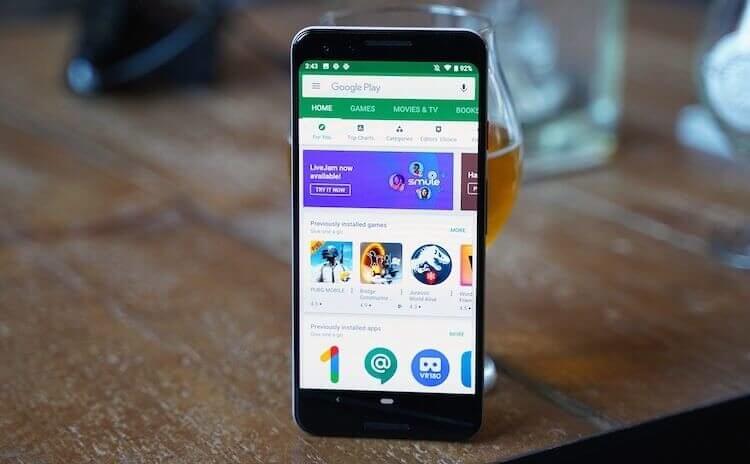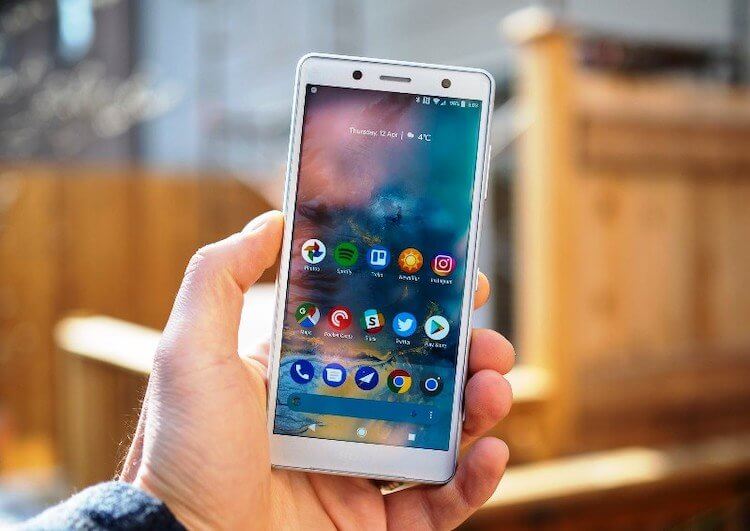When they show a new smartphone, the first thing many people ask about is what screen it has. Everyone wants it to be bigger, then even more, and then very large, but there is no limit to perfection. As if the hand of a modern user stretches a little from the past of a large phone and now they are proudly told from the stage that the new product has become another 0.1 inches larger. Indeed, manufacturers are so chasing extra inches, as if the user will buy such a device and this will affect the size of something else. Too much has changed in our world lately to continue following old patterns. You need to relax and take a step back, and here's why.

Big phones have their advantages, but they are inconvenient to use.
When did big screen phones start?
Once upon a time, at the dawn of the emergence of smartphones in the modern sense of the word, many argued not about what the normal screen size should be. In general, people were not tempted and switched to smartphones from push-button dialers with a screen much smaller.
iPhone was promoting the idea of a compact smartphone at the time. Steve Jobs himself said that the screen should be such that any part of it could be easily reached with one finger. In parallel with this, a shovel-shaped Samsung Galaxy Note was being developed in its little world. There was even a joke like “I bought a Samsung smartphone. Now the wind doesn't blow in your face. ” It really was huge for its time. Anyway, devices on Android were larger iPhone. But over the course of four years, he bent his line, changing almost nothing. Only with the release of iPhone 5 the screen size increased by 0.5 inches.

This is the difference between iPhone of the first generation and iPhone 11
At the same time Android – smartphones, on the contrary, gradually ceased to suffer from gigantomania. Then the market calmed down a bit, until it came out iPhone 6. It became another 0.7 inches more than the “five”, and the Plus-version did by 1.5 inches. And then the terrible began – everyone again began to chase shovels. One Xiaomi Mi Max was worth what.
Then there was a jump in the size of the diagonal of the smartphone, but it was associated with the transition to framelessness and the increase in the diagonal by 1-1.5 inches occurred almost without changing the size of the case.
Optimal smartphone screen size
When we used small screens, browsers were the only problem. Pages then weren't as well optimized as they are now, and they had to be constantly folded and scaled.
Now this issue has been almost completely resolved. Smartphones have become much more convenient in this regard, and sometimes you catch yourself thinking that some content looks better on a smartphone screen with a 6-inch diagonal than on a tablet screen with a diagonal of 10-11 inches. This is not surprising since most of the world's traffic has long been consumed from mobile devices. Therefore, the designers “licked” everything and led to an almost ideal version.

All serious applications are now perfectly optimized for the smartphone screen.
It seems to me that the optimal screen size is one that fits into the body of modern frameless 5.7-6-inch devices. Once upon a time they could fit no more than 5 inches, but now 6. But that doesn't matter. The main thing is that such a comfortable device fits perfectly in the hand. It also doesn’t pull the pocket down and there’s no problem using it with one hand. Well, I've already said about the content. Everything on it fits.
We can say that it is more convenient to use two applications on a large screen, but is it worth it when the diagonal grows by 1 inch, and the weight and size of the phone are much more significant.
Yes, it is convenient to play some games or watch videos on such a large screen, but why this is needed in everyday life, I do not really understand. And then the question arises, why do not manufacturers want to give their customers a choice?
Can I choose the diagonal of the screen
At one time, Sony released its Xperia XZ 2 Compact (we had a review). When I saw this smartphone, I quietly rejoiced in myself. “Did the manufacturers really understand that not everyone needs shovels,” I thought. But I was not happy for long.

Sony Xperia XZ2 Compact – It was compact, but very cool.
The model was not continued, and it somehow didn’t come in, although it was technically in no way inferior to the flagship, it simply had a smaller screen diagonal. Most likely, it did not go due to the fact that it cost only marginally cheaper than the usual Sony Xperia XZ2. Well, do not forget that this is Sony, towards whose smartphones people, in principle, have a rather skeptical attitude.
Of course, I'm not a marketer, although I often make correct predictions, and I don't have as much research data as large companies, but I don't understand why normal manufacturers don't try again. Just make a phone that offers a choice of not only different memory, but also a compact size. This will be enough for many and a small smartphone for 20,000 rubles will be bought much more willingly than for 50,000 rubles.
You will say that there are smartphones in versions XL, Pro, Max and so on, but the problem is that I am offering us a large and even more, and not a large and small device.
Let's see how events will develop further, but the fact remains – you get used to any screen, and excellent optimization of applications and sites allows you to stop paying attention to the smaller diagonal in a couple of hours. Only yesterday I came across more proof of this, when I worked for two months on self-isolation at a computer with two 27-inch monitors, and then I spent a day with a MacBook Pro 13 and absolutely nothing has changed in terms of productivity and comfort. It's only hard to mount, but that's a separate topic.
